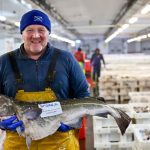According to the study aquaculture, once a fledgling industry, now accounts for 50 percent of the fish consumed globally. It is true that aquaculture industry ahs covered a long journey and has become more efficient than ever. It is also putting a significant strain on marine resources by consuming large amounts of feed made from wild fish harvested from the sea.
The author of the report informed that aquaculture is set to reach a landmark in 2009, supplying half of the total fish and shellfish for human consumption. The author also said that the huge expansion is being driven by demand. The lead author is Rosamond L. Naylor, a professor of environmental Earth system science at Stanford University and director of the Stanford Program on Food Security and the Environment.
He told that as long as we are a health-conscious population trying to get our most healthy oils from fish, we are going to be demanding more of aquaculture and putting a lot of pressure on marine fisheries to meet that need. It is informed that in 2006, aquaculture production was 51.7 million metric tons, and about 20 million metric tons of wild fish were harvested for the production of fishmeal. “It can take up to five pounds of wild fish to produce one pound of salmon, and we eat a lot of salmon.
One way to make salmon farming more environmentally sustainable is to simply lower the amount of fish oil in the salmon’s diet. It is told that reducing the amount of fish oil in the salmon’s diet definitely gets you a lot more bang for the buck than reducing the amount of fishmeal. On the policy front, it is pointed to the 2006 California Sustainable Oceans Act and the proposed National Offshore Aquaculture Act, which call for reductions in the use of fishmeal and fish oil in feeds.








